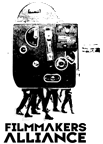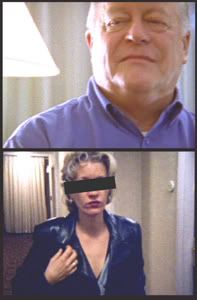In the beginning there was light that hit a strip of flexible film mechanically running through a camera. For most of movie history this is how moving pictures were created: light reflected off people and things would filter through a camera and physically transform emulsion. After processing, that light-kissed emulsion would reveal Humphrey Bogart chasing the Maltese Falcon in shimmering black and white.
More and more, though, movies are either partly or entirely digital constructions that are created with computers and eventually retrieved from drives at your local multiplex or streamed to the large and small screens of your choice. Right before our eyes, motion pictures are undergoing a revolution that may have more far reaching, fundamental impact than the introduction of sound, color or television. Whether these changes are scarcely visible or overwhelmingly obvious, digital technology is transforming how we look at movies andwhat movies look like, from modestly budgeted movies shot with digital still cameras to blockbusters laden with computer-generated imagery. The chief film (and digital cinema) critics of The New York Times, Manohla Dargis and A. O. Scott, look at the stuff dreams are increasingly made of.
A. O. SCOTT In Jean-Luc Godard’s 1986 movie “Keep Up Your Right” a movie director (played by Mr. Godard) declares that “the toughest thing in movies is carrying the cans.” Those once-ubiquitous, now increasingly quaint metal boxes contained the reels of exposed celluloid stock that were the physical substance of the art form. But nowadays the easiest thing in digital movies might be carrying the hard drive or uploading the data onto the server. Those heavy, bulky canisters belong to the mechanical past, along with the whir of the projectors and the shudder of the sprockets locking into their holes.
Should we mourn, celebrate or shrug? Predigital artifacts — typewriters and record players, maybe also books and newspapers — are often beautiful, but their charm will not save them from obsolescence. And the new gizmos have their own appeal, to artists as well as consumers. Leading manufacturers are phasing out the production of 35-millimeter cameras. Within the next few years digital projection will reign not only at the multiplexes, but at revival and art houses too. According to an emerging conventional wisdom, film is over. If that is the case, can directors still be called filmmakers? Or will that title be reserved for a few holdouts, like Paul Thomas Anderson, whose new film, “The Master,” was shot in 70 millimeter? It’s not as if our job has ever been to review the coils of celluloid nestled in their cans; we write about the stories and the pictures recorded on that stock. But the shift from photochemical to digital is not simply technical or semantic. Something very big is going on.
MANOHLA DARGIS Film isn’t dead yet, despite the rush to bury it, particularly by the big studios. Film does not have to disappear. Film isn’t broken — it works wonderfully well and has done so for a century. There is nothing inevitable or natural about the end of film, no matter how seductive the digital technologies and gadgets that are transforming cinema. A 16-millimeter film camera is plenty cool. A 35-millimeter film image can look sublime. There’s an underexamined technological determinism that shapes discussions about the end of film and obscures that the material is being phased out not because digital is superior, but because this transition suits the bottom line.
The end of film isn’t a just a technological imperative; it’s also about economics (includingdigital rights management). In 2002 seven major studios formed the Digital Cinema Initiatives (one later dropped out), the purpose of which was “to establish and document voluntary specifications for an open architecture for digital cinema that ensures a uniform and high level of technical performance, reliability and quality control.” What these initiatives effectively did was outline the technological parameters that everyone who wants to do business with the studios — from software developers to hardware manufacturers — must follow. As the theorist David Bordwell writes, “Theaters’ conversion from 35-millemeter film to digital presentation was designed by and for an industry that deals in mass output, saturation releases and quick turnover.” He adds, “Given this shock-and-awe business plan, movies on film stock look wasteful.”
SCOTT Let me play devil’s advocate, though I hope that doesn’t make me an advocate for the corporate interests of the Hollywood studios. If there is a top-down capitalist imperative governing the shift to digital exhibition in theaters, there is at the same time a bottom-up tendency driving the emergence of digital filmmaking.
Throughout history artists have used whatever tools served their purposes and have adapted new technologies to their own creative ends. The history of painting, as the art critic James Elkins suggests in his book “What Painting Is,” is in part a history of the changing chemical composition of paint. It does not take a determinist to point out that artistic innovations in cinema often have a technological component. It takes nothing away from the genius of Gregg Toland, the cinematographer on “Citizen Kane,” to note that the astonishing deep-focus compositions in that film were made possible by new lenses. And the arrival of relatively lightweight, shoulder-mounted cameras in the late 1950s made it possible for cinéma vérité documentarians and New Wave auteurs to capture the immediacy of life on the fly.
Long before digital seemed like a viable delivery system for theatrical exhibition, it was an alluring paintbox for adventurous and impecunious cinéastes. To name just one: Anthony Dod Mantle, who shot many of the Dogma 95 movies and Danny Boyle’s zombie shocker“28 Days Later,” found poetry in the limitations of the medium. In the right hands, its smeary, blurry colors could be haunting, and the smaller, lighter cameras could produce a mood of queasy, jolting intimacy.
Image quality improved rapidly, and the last decade has seen some striking examples of filmmakers exploring and exploiting digital to aesthetic advantage. The single 90-minute Steadicam shot through the Hermitage Museum that makes up Alexander Sokurov’s“Russian Ark” is a specifically digital artifact. So is the Los Angeles nightscape in Michael Mann’s “Collateral” and the rugged guerrilla battlefield of Steven Soderbergh’s “Che,” a movie that would not exist without the light, mobile and relatively inexpensive Red camera.
Digital special effects, meanwhile, are turning up this season not only in phantasmagorical places like “Cloud Atlas” and “Life of Pi,” but also in movies that emphasize naturalism. To my eyes the most amazing bit of digital magic this year is probably the removal of Marion Cotillard’s legs — including in scenes in which she wears a bathing suit or nothing at all — in Jacques Audiard’s gritty “Rust and Bone.” While movie artists of various stripes gravitate toward the speed, portability and cheapness of digital, which offers lower processing and equipment costs and less cumbersome editing procedures, consumers, for their part, are suckers for convenience, sometimes — but not always — at the expense of quality.















We should shrug, as things evolve and so does film and anybody who does not follow, is obsolete. That is the nature of thing and no nostalgia, no fear of the unknown and no sentiment will help.
ReplyDeleteEspecially in a field as young and as commonly changing as movies. In a hundred years, movie went from a mere roadside and carnival attraction to one of the biggest industries.
Much of the stuff we use - we can see this especially well in the grip department - has been developed on the spot, because it was needed at that time and it was used by others , because it made sense.
Film itself was always just a step, we just didn't know.
good post, love the one point perspective.
ReplyDelete